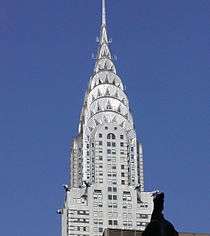Lincoln Square, Manhattan


Lincoln Square is the name of both a square and the surrounding neighborhood within the Upper West Side of the New York City borough of Manhattan. Lincoln Square is centered on the intersection of Broadway and Columbus Avenue, between West 65th and West 66th streets. The neighborhood is bounded by Columbus Avenue and Amsterdam Avenue to the east and west, and West 66th and 63rd Street to the north and south.[1] However, the term can be extended to have the neighborhood between West 59th Street and West 72nd Street. It is bounded by Hell's Kitchen, Riverside South, Central Park, and the Upper West Side proper.
The area is served by the 66th Street – Lincoln Center subway station (1 2 trains) and anchored by Lincoln Center for the Performing Arts. Tourist information, sidewalk trash removal, and security patrol services are provided by the Lincoln Square BID.
History
Lincoln Square was formerly called San Juan Hill, a predominantly African American neighborhood of tenements, generally bordered by Amsterdam Avenue to the east, West End Avenue to the west, 59th Street to the south, and 65th Street to the north. It has been suggested that the area was named after the 10th Cavalry that fought with Theodore Roosevelt at the Battle of San Juan Hill during the Spanish–American War, but this is not certain. It was possibly the most heavily populated African-American neighborhood in Manhattan in the early 20th century.[2] Notable residents had included Thelonious Monk, who came to live here in 1922. In addition to the significant African American community, there was also an Afro-Caribbean community there, which has left its traces in Bye-ya and Bemsha Swing compositions of Thelonious Monk, co-written much later with Denzil Best, who also grew up in this neighborhood.[3]
In 1940, the New York City Housing Authority characterized the area as "the worst slum section in the City of New York," and made plans to renew the area by demolishing the old tenements and building in its place the Amsterdam Housing Projects and Lincoln Center for the Performing Arts.[2]
A consortium of civic leaders and others led by, and under the initiative of, John D. Rockefeller III built Lincoln Center as part of the "Lincoln Square Renewal Project" during Robert Moses's program of urban renewal in the 1950s and 1960s.[4] Respected architects were contracted to design the major buildings on the site, and over the next thirty years the previously blighted area around Lincoln Center became a new cultural hub.[5]
Name
Lincoln Center was named after Lincoln Square. The reason for naming the area "Lincoln Square" is unknown, however. The name was bestowed on the area in 1906 by the New York City Board of Aldermen, but records give no reason for choosing that name.[1]
There has long been speculation that the name came from a local landowner, because the square was previously named Lincoln Square. City records from the time show only the names Johannes van Bruch, Thomas Hall, Stephan de Lancey, James de Lancey, James de Lancey Jr. and John Somerindyck as area property owners.
The area may also have been named as a tribute to U.S. President Abraham Lincoln. One speculation is that references to President Lincoln were omitted from the records because the mayor in 1906 was George B. McClellan, Jr., son of General George B. McClellan who was general-in-chief of the Union Army during the American Civil War and a bitter rival of Lincoln.[6]
Demographics
Based on data from the 2010 United States Census, the population of Lincoln Square was 61,489, an increase of 6,250 (11.3%) from the 55,239 counted in 2000. Covering an area of 371.00 acres (150.14 ha), the neighborhood had a population density of 165.7 inhabitants per acre (106,000/sq mi; 40,900/km2).[7]
The racial makeup of the neighborhood was 73.4% (45,103) White, 4.4% (2,710) African American, 0.1% (58) Native American, 11.2% (6,916) Asian, 0.0% (14) Pacific Islander, 0.3% (175) from other races, and 1.9% (1,196) from two or more races. Hispanic or Latino of any race were 8.6% (5,317) of the population.[8]
Points of interest
|
|
References
Notes
- 1 2 Collins, Glenn (2009-05-11). "50 Years In, Lincoln Center's Name Is Still a Mystery". The New York Times. City Room Blog.
Records conclusively show that the New York City Board of Aldermen formally named the area Lincoln Square in May 1906. The minutes of their meetings are devoid of discussion, however, about the reason for the name.
- 1 2 "NYCHA Collection, LaGuardia and Wagner Archives". Retrieved June 19, 2011.
- ↑ Kelley, Robin D.G. (2010). Thelonious Monk : the life and times of an American original (1st Free Press trade pbk. ed.). New York: Free Press. ISBN 978-1439190463.
- ↑ "Rockefeller Philanthropy: Lincoln Center" (PDF format).
- ↑ Roth, Leland M. (2001). American Architecture: A History. Boulder, Colo.: Westview Press. ISBN 9780813336619, ISBN 9780813336626. OCLC 47867623.
- ↑ Collins, Glenn (May 11, 2009). "50 Years In, Center's Name Is Still a Mystery". The New York Times. Retrieved November 15, 2010.
- ↑ Table PL-P5 NTA: Total Population and Persons Per Acre - New York City Neighborhood Tabulation Areas*, 2010, Population Division - New York City Department of City Planning, February 2012. Accessed June 16, 2016.
- ↑ Table PL-P3A NTA: Total Population by Mutually Exclusive Race and Hispanic Origin - New York City Neighborhood Tabulation Areas*, 2010, Population Division - New York City Department of City Planning, March 29, 2011. Accessed June 14, 2016.
Further reading
- Grand Buildings, but Also a Sense of Community, The New York Times, 2006-04-30.
External links
| Wikimedia Commons has media related to Lincoln Square, Manhattan. |
